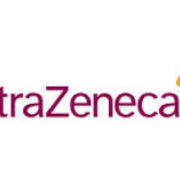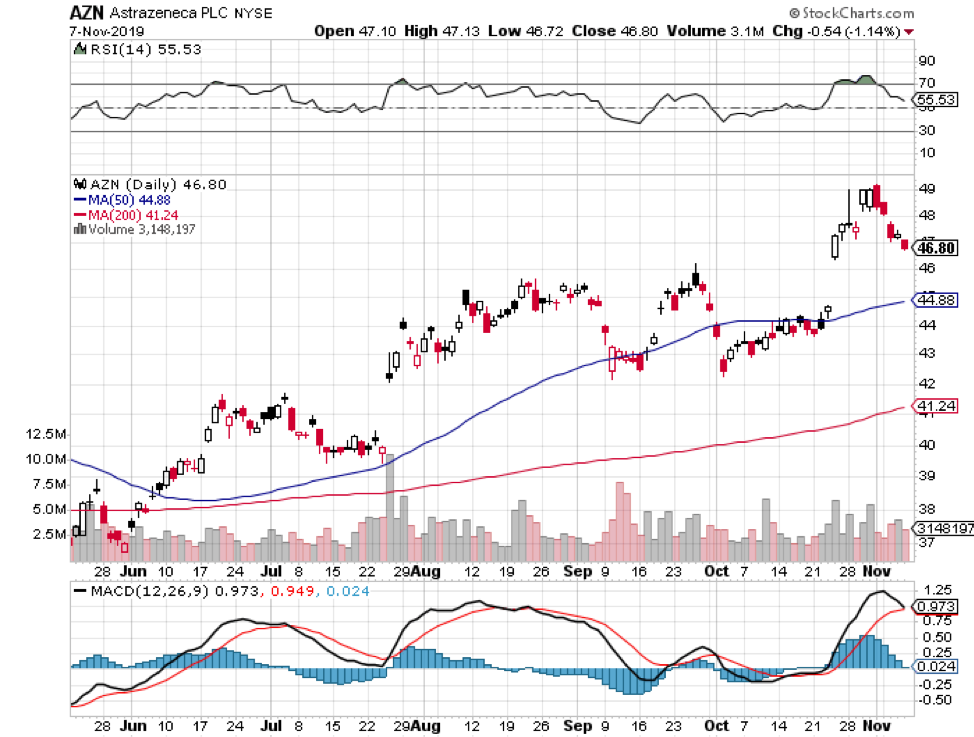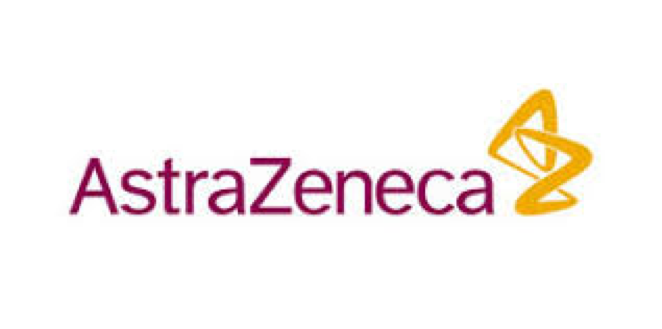AstraZeneca plc (AZN) has shown a dramatic turnaround over the past three years, crushing its close competitors in the big biopharma landscape. Posting growth for the fifth straight quarter for both profit and sales, the stock has gained more than 10% in the run-up to its latest earnings report.
This pushed the company’s total stock market gains for 2019 to a stellar 33.4%. From a forward-looking price-to-earnings perspective though, investors must remain cautious as the stock also now sports a high valuation.
One of the reasons for the stock’s soaring performance this year is the promising cancer drug lineup, which is the result of AstraZeneca’s risky move to splurge on the development of these products way back in 2014.
Now, although no hard data has been disclosed to the public to date, AstraZeneca’s oncology lineup has been pegged to give Merck & Co.’s (MRK) Keytruda and Bristol-Myers Squibb Co.’s (BMY) Opdivo a run for their money in the lucrative lung cancer drug market.
AstraZeneca is anticipated to release survival data by 2020, with its acquired company Pearl Therapeutics taking charge of testing the effectiveness of Imfinzi to treat non-small cell lung cancer. The robust competition presented by both Bristol’s Opdivo and AstraZeneca’s Imfinzi is projected to carve out $2.5 billion from the sales of Merck’s cash cow Keytruda from 2021 to 2028.
Aside from Imfinzi, AstraZeneca has also raked in increasing revenue from another NSLC drug Tagrisso and ovarian cancer medication Lynparza.
Sales of AstraZeneca’s cancer drugs jumped 48% to hit $2.3 billion in the third quarter of 2019. In the first half of the year, total revenue from the company’s oncology lineup alone soared 52% year over year.
AstraZeneca’s largest moneymaker at the moment, Tagrisso, contributed more than $1.4 billion in the first six months of the year, jumping by 86% compared to the same period in 2018. The surge brought about by this strong cancer drug lineup resulted in a 16% rise in the company’s earnings in the third quarter, hitting $6.1 billion.
While these results are impressive, AstraZeneca’s cancer drug sales have yet to reach their peak. As impressive as Tagrisso has been in the first half of 2019, the other two cancer drugs of the company are actually outperforming this product.
One is Imfinzi, which saw its sales skyrocket by 248% during the same period, raking in $633 million. Meanwhile, Lynparza sales practically doubled to reach $520 million.
While its US sales remain competitive with the company achieving 17% revenue growth, AstraZeneca’s initiatives to expand to the Chinese market have also started to pay off. In fact, earnings from this East Asian country account for almost a fifth of the company’s revenue.
Sales in China continued its positive streak, rising 40% to reach $1.28 billion. To sustain this momentum and strengthen its stronghold in the market, the company recently announced its move to invest $1 billion to develop healthcare startups in the Middle Kingdom. This makes AstraZeneca the latest biopharma behemoth to place a bet on the second-biggest pharmaceuticals market in the world.
With all these in mind, it’s almost impossible to handicap the long-term outlook for AstraZeneca. The company currently has an impressive nine-drug lineup all set to turn into blockbusters this year.
Although the loss of patent exclusivity for cardiovascular disease moneymaker Crestor definitely affected the company, its move to transform its cancer drugs into core growth drivers has been quite successful thus far.
Bolstering its pillars of growth is AstraZeneca’s focus on building on its high-value lung cancer lineup particularly on Imfinzi and Tagrisso. Its emerging cardiovascular drug line has also been garnering attention, making heart medication Brilinta and diabetes treatment Farxiga the next blockbusters for the company.
On top of these, AstraZeneca has been actively developing potent combinations involving mantle cell lymphoma treatment Calquence and Lynparza. Needless to say, the company’s clinical pipeline has presented itself as one of the most promising in the biotech world today.
From where things stand at the moment, AstraZeneca appears to be vindicated in fighting for its standalone strategy and pushing back from the $118 billion hostile takeover attempt of Pfizer in 2014.
In increasing its footprint in emerging markets, AstraZeneca has transformed itself into a biotech company with the potential to dominate the industry in the years to come.
Buy AstraZeneca with both hands on the next dip.



